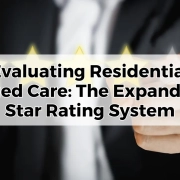A Guide to Means Tested Care Fees
Table of Contents
ToggleAs our loved ones age, making informed decisions about their care becomes paramount. Among the various considerations, understanding means tested care fees and how they are calculated is crucial for families in Australia. These fees can significantly impact the financial well-being of ageing parents or family members, and as adult children or relatives involved in the decision-making process, it is essential to be well-informed.
In this comprehensive guide, we aim to shed light on means tested care fees and provide insights into how to lower them through a low means assessment. By familiarising yourself with these concepts and strategies, you can ensure that your ageing parents or family members receive the care they need while minimising the financial burden on their shoulders.
Whether you are already navigating the aged care system or preparing for the future, this blog post will equip you with the knowledge necessary to understand means tested care fees in Australia. From explaining the calculation process to exploring options for reducing these fees, we will empower you to make informed decisions that can positively impact your loved ones’ lives.
What Are Means Tested Care Fees?
As you navigate the aged care system in Australia, you will likely come across the term “means tested care fees.” Understanding what these fees entail and their implications is crucial for ensuring the financial well-being of your ageing parents or family members.
Means tested care fees are a contribution towards the cost of aged care services provided by the Australian government. These fees are determined based on an individual’s income and assets. The objective is to create a fair and equitable system that allocates costs according to one’s ability to pay.
When a person enters residential aged care or receives home care services, they undergo a free assessment with an Aged Care Assessment Team (ACAT [or ACAS in Victoria]). This assessment determines the appropriate level of care needed, assesses people’s eligibility to receive care, including emergency residential respite care and a home care package, and also evaluates the individual’s financial circumstances to calculate the means tested care fees.
The calculation of means tested care fees takes into account two main factors: income and assets. Let’s explore each of these factors in more detail:
Income
The income considered for means testing includes sources such as pensions, social security benefits, superannuation payments, dividends, and rental income. The Services Australia or the Department of Veterans’ Affairs (DVA) assesses the person’s income to determine their ability to contribute towards the cost of care.
Assets
Assets encompass a wide range of possessions, including cash, savings, investments, property, and vehicles. The Services Australia or DVA assesses the value of these assets to determine the individual’s ability to contribute financially.
It is important to note that the family home is generally exempt from the assets assessment if a spouse, dependent child, or carer continues to live in the home. However, there are certain circumstances where the value of the family home may be included in the assessment.
Once the income and assets assessment is completed, a means tested care fee is calculated. This fee represents the individual’s contribution towards the cost of their aged care services. The exact amount of the fee will vary based on the person’s financial situation, with higher-income earners and individuals with significant assets generally paying higher fees.
Means tested care fees can have a substantial impact on an individual’s financial circumstances. It is important to understand and plan for these fees to ensure that the cost of care is manageable and sustainable.

How Means Tested Care Fees Are Calculated
Understanding how means tested care fees are calculated is crucial for estimating the potential financial implications of aged care services. Let’s delve into the assessment process and factors involved in determining these fees.
Assessment Process
The assessment process for means tested care fees involves the Services Australia or the DVA. These government agencies evaluate an individual’s financial circumstances to determine their ability to contribute towards the cost of care.
Factors Considered
Several key factors are taken into account during the means testing process:
Income Assessment
The Services Australia or DVA assesses the individual’s income, which includes sources such as pensions, superannuation, investments, and any other form of regular income. The assessment considers both the individual’s income and, if applicable, their partner’s income.
Assets Assessment
The assessment also includes an evaluation of the individual’s assets. This encompasses cash, savings, investments, real estate properties (excluding the family home in certain situations), motor vehicles, and other valuable possessions. The assessment calculates the total value of the assets.
Combined Assessment
The income and assets assessments are combined to determine the means tested care fee. The higher of the two calculations, based on income or assets, is used to calculate the fee. This means that the individual will pay the higher amount between their income-based fee and their assets-based fee.
Fee Calculation
Once the income and assets assessments are complete, the means tested care fee is calculated using a formula provided by the Australian government. This formula considers the individual’s financial situation and determines their contribution towards the cost of their aged care services.
To better understand how the means tested care fee is calculated, check out these scenarios.
Strategies to Lower Means Tested Care Fees
Introduction to Low Means Assessment
While means tested care fees can pose a financial challenge for families, it’s important to be aware of strategies that can help reduce these fees. One such strategy is the low means assessment, designed to support individuals with limited financial means. Let’s explore how this assessment works and who can benefit from it.
Eligibility for Low Means Assessment
The low means assessment is available for individuals who may face difficulty paying the standard means tested care fees due to their financial situation. This assessment takes into account a person’s income and assets to determine if they qualify for reduced fees based on low means.
Benefits of Low Means Assessment
Undergoing a successful low means assessment can lead to a significant reduction in means tested care fees, potentially offering substantial savings. By providing evidence of limited financial means, individuals may qualify for a more affordable fee structure that better aligns with their financial capabilities.
Key Steps to Undertake a Low Means Assessment
If you believe your ageing parents or family members may qualify for a low means assessment, consider the following steps:
- Gather Relevant Financial Information. To initiate the low means assessment, gather the necessary financial documents. These may include income statements, bank statements, investment details, property valuations, and any other relevant financial information required to establish the individual’s financial position accurately.
- Contacting the Services Australia: Reach out to the Services Australia to initiate the low means assessment process. Contact details and specific requirements for initiating the assessment can be obtained from the Services Australia website or by calling their helpline. Seek clarification on any specific documentation or forms that need to be completed.
- Completing the Low Means Assessment Form: The Services Australia will provide a low means assessment form that needs to be completed accurately and thoroughly. Take the time to understand the form’s sections and provide all necessary information to support the low means assessment. If unsure about any section or require assistance, consider seeking guidance from aged care financial advisers or the Services Australia helpline.
- Submission and Follow-Up: Submit the completed low means assessment form along with any supporting documentation required by the Services Australia. Keep copies of all submitted materials for your records. After submission, you can track the progress of the assessment by following up with the Services Australia. This will provide you with an estimated timeline for the assessment outcome.
By undertaking these steps and going through the low means assessment process, you may significantly reduce the means-tested care fees for your ageing parents or family members, ensuring a more affordable and sustainable financial arrangement.

Benefits and Potential Savings
Lowering means tested care fees through a successful low means assessment can have a significant positive impact on the financial well-being of your ageing parents or family members. Let’s explore the benefits and potential savings that can be achieved through this assessment process:
- Reduced Means Tested Care Fees: The primary benefit of a low means assessment is the potential reduction in means-tested care fees. By demonstrating limited financial means, your ageing loved ones may qualify for a revised fee structure that takes into account their financial situation. This can result in more affordable care fees, alleviating the burden on their finances.
- Long-Term Financial Relief: A successful low means assessment can provide long-term financial relief. By reducing the means-tested care fees, your ageing parents or family members can enjoy increased financial stability, ensuring that their aged care expenses are more manageable over time. This relief can bring peace of mind to both the individuals receiving care and their family members.
- Improved Budgeting and Planning: Knowing the reduced means-tested care fees allows for better budgeting and financial planning. With a clearer understanding of the costs involved, you can create a more accurate financial forecast and ensure that the necessary funds are available for the care of your ageing loved ones. This enables you to make informed decisions and allocate resources effectively.
- Potential Savings and Preservation of Assets: Lower means-tested care fees can result in substantial savings over time. The reduced fees can help preserve your ageing parents’ or family members’ assets, allowing them to be utilised for other essential needs or passed on as inheritance. This can provide greater financial security and flexibility for the entire family.
- Enhanced Quality of Life: By reducing the financial burden associated with means-tested care fees, your ageing loved ones can experience an enhanced quality of life. They can access the necessary care and support without being overwhelmed by unmanageable expenses, allowing them to focus on their well-being and enjoy a higher standard of living during their senior years.
It is important to note that the benefits and potential savings will vary depending on each individual’s financial circumstances and the outcome of the low means assessment. Seeking advice from aged care financial advisers can help you understand the specific implications for your situation and ensure that you maximise the available benefits.

Understanding means tested care fees and exploring strategies to lower them through a low means assessment is crucial for making informed decisions regarding the care of your ageing parents or family members. By grasping the calculation process of means-tested care fees and pursuing a low means assessment, you can reduce the financial burden associated with aged care services, improving their financial well-being.
Remember, it is advisable to consult with an aged care financial adviser who can provide personalised guidance tailored to your specific circumstances. By taking proactive steps and exploring all available options, you can ensure that your loved ones receive the care they need while safeguarding their financial security.
Empower yourself with knowledge, seek professional advice, and embark on this journey to create a financially sustainable and comfortable future for your ageing parents or family members. With the right strategies in place, you can navigate the complexities of means tested care fees and make informed choices that benefit the entire family.









